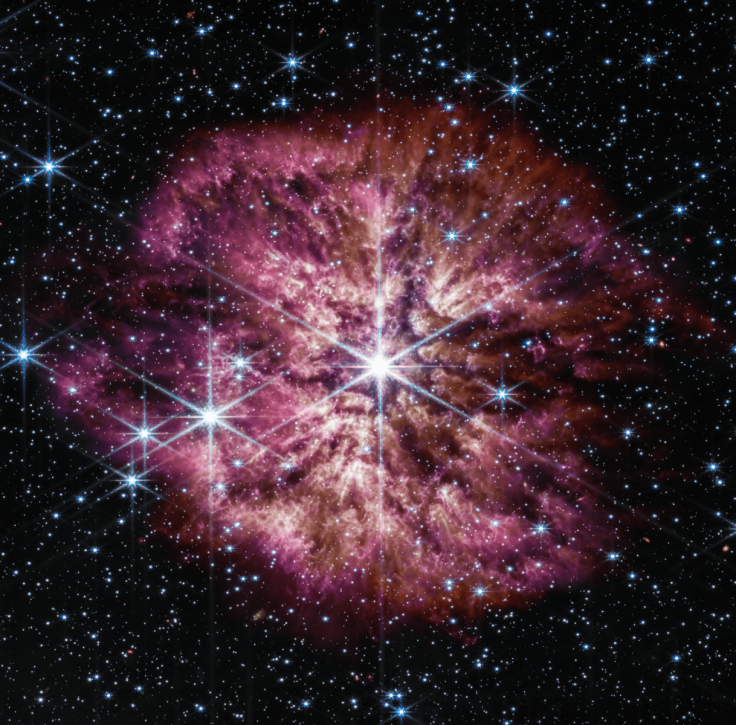Who knew that dying could look so beautiful?
NASA recently published a picture from the James Webb Space Telescope (JWST or Webb for short) of a faraway star larger than our Sun going through the process of going supernova, the explosion at the end of a large star's life.
Webb took the picture of the dying star during its first few days as a commissioned telescope, per Space.com.
Wolf-Rayet Star Supernova Details

NASA mentioned in a blog post that Webb captured a photo of a Wolf-Rayet star, one of the most luminous, massive, and briefly detectable stars known to man, in June 2022, going through its death throes before it goes supernova.
For those unaware, a supernova occurs when a star eight or ten times larger than our Sun exhausts its hydrogen fuel and collapses, blowing off most of its mass, per NASA. After the explosion, its core will remain to form a neutron star or a black hole.
Needless to say, these celestial explosions are among the most energetic events in the universe, with them being one of the sources of various elements like calcium, silver, iron, gold, and silicon.
For the star Webb captured using its infrared instruments, WR 124, is in the process of casting off its outer layers, which results in their characteristic halos of gas and dust. This shedding of a star's outer layers before going supernova is called a Wolf-Rayet phase - a period of a star's life that only some can go through.

WR 124 is about 30 times the size of our Sun making it a candidate for a star that can end its life as one through a supernova and even go through a Wolf-Rayet phase. NASA states that WR 124 has shed ten Suns' worth of material, so far. But while its death may seem glorious to behold, it is also an opportunity for young stars to form.
The space agency mentioned that the cosmic date that can survive a supernova and contribute to the universe's overall "dust budget" could shelter forming stars, form planets, and serve as a platform for molecules to form and clump together. These make cosmic dust a fascinating subject for astronomers to focus on.
Webb's Contribution To Studying Supernovae And Cosmic Dust
Webb was the world's premier space science observatory even before being commissioned as a space observatory. Its infrared instruments make it possible to capture stars during their final days and even observe distant worlds and bring humanity as far back in time as a few hundred years after the Big Bang.
For WR 124, however, NASA used Webb's Near-Infrared Camera (NIRCam) to balance WR 124's stellar core's brightness and the knotty details in the fainter surrounding gas. Meanwhile, its Mid-Infrared Instrument revealed the clumpy structure of the gas and dust nebula of the material WR 124 ejected, which now surrounds it.
Had NASA not had a telescope as powerful as Webb, pictures of WR 124 wouldn't be as detailed as experts want to explore questions of dust production and whether the dust grains were large and bountiful enough to survive a supernova and contribute to the universe's overall dust budget.
Related Article : James Webb Space Telescope Captures Spiral Galaxy in Great Detail









